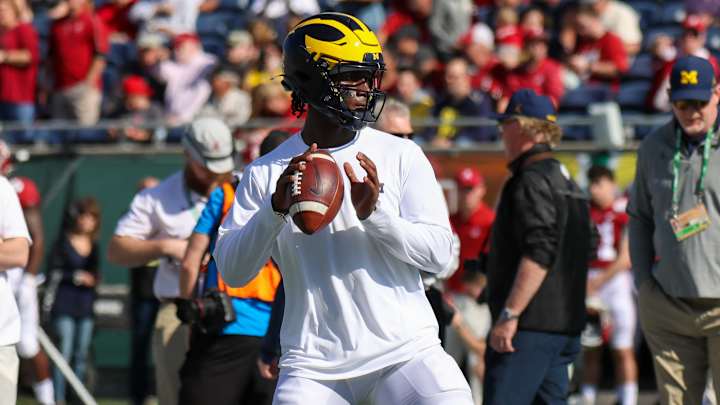Analyst: Title Game Reminds Michigan How Far It Needs To Go

Five years. That’s how long it’s been since former Athletic Director Jim Hackett stunned the football world by luring Jim Harbaugh from the San Francisco 49ers and back to the place where he starred in college, where he always dreamed of coaching.
With that hire came surreal expectations — regaining a foothold in the one-sided rivalry with Ohio State, both on the field as well as on the recruiting trail. There were visions of being a pipeline for elite talent, conference championships, major bowl wins. Some even dared to dream of national title, something the Wolverines hadn’t achieved since 1997.
Michigan got another look at where they strive to be on Monday night, as top powerhouses Clemson and LSU battled it out for the national title, with Joe Burrow and the Baton Rouge Tigers claiming the ultimate prize.
“I think that those two programs have schemes that really fit their players,” said former player and “Inside the Huddle” former OL starter and 'Inside the Huddle with Michael Spath' regular Reuben Riley said. “They really know how to take advantage of mismatches. It’s also about the caliber of athletes that they have.
“There was elite speed on that field, elite athleticism on that field. Not that we don’t have that, but compared to our program you can see that there’s another tier.”
One discussion surrounding the gap that remains between Michigan and the truly elite college football teams centers around the most important position on the field: quarterback play.
Monday night showcased two of the premier talents in the nation under center. LSU’s Burrow, the 2019 Heisman trophy winner, capped off arguably the greatest season by a quarterback in college football history — over 5,600 yards through the air with a 76% completion percentage and an almost unthinkable NCAA single-season record 60 touchdown passes.
Opposing him was Clemson’s Trevor Lawrence, who some claim as the best quarterback prospect since Andrew Luck. The sophomore just lost his first game as a starter since 2018, and he will be the presumed Heisman frontrunner and projected top pick in the 2021 NFL Draft heading into his junior season.
Compare that to what Michigan has had during Harbaugh’s tenure. Jake Ruddock made substantial progress in his one year under Harbaugh. Wilton Speight and John O’Korn never lived up to their potential. And while Shea Patterson had promising moments the past two years, it would be hard pressed to find anyone placing him up there with the likes of Burrow and Lawrence.
“When you talk about quarterback play, it’s more important than it ever has been,” said Riley, who started 28 games from 2004-06. “To be a spread offense, to get multiple receivers on the field, you need a guy that can get that ball to those receivers. You need a guy that can manage and be a field general. When you don’t have that, you’ll struggle with your program, especially when you put that much onus and responsibility on your quarterback."
With Patterson graduating, the next hope for the Wolverines on the “special quarterback” front will come down to the competition between redshirt junior Dylan McCaffery and redshirt sophomore Joe Milton. Another option could be taking the route that LSU and Oklahoma rode to playoff births this year: a graduate transfer.
“From my estimation, I think we have two of those guys right now," Riley said. “Now, do we develop them from a standpoint of managing the offense, understanding the schemes, taking advantage of mismatches, knowing what the concept is but making it their own where they play to the level of talent where they have on the field?
"Those are the little tweaks and things that you do to make sure that you’re putting your players and yourself in the best position to win.”
Like almost every off-season under Harbaugh, the summer of 2020 will be crucial in adjusting the program to achieve the goal of playing in the biggest games with the best talent. Michigan once again saw on Monday night how far it still has to go to get to that level.
The question now is, can it get there?
